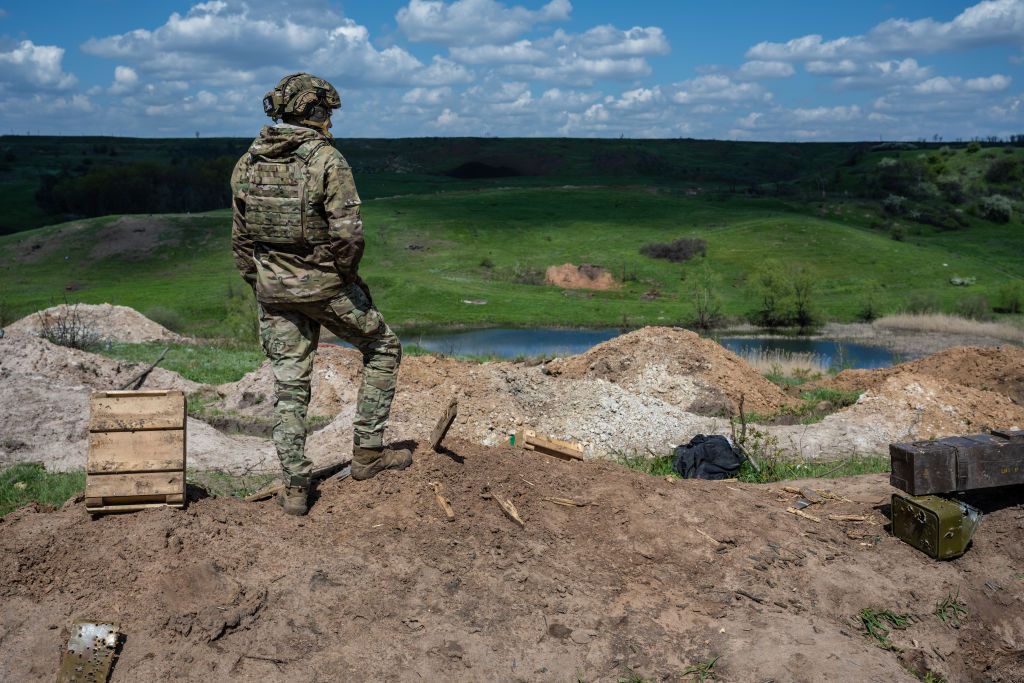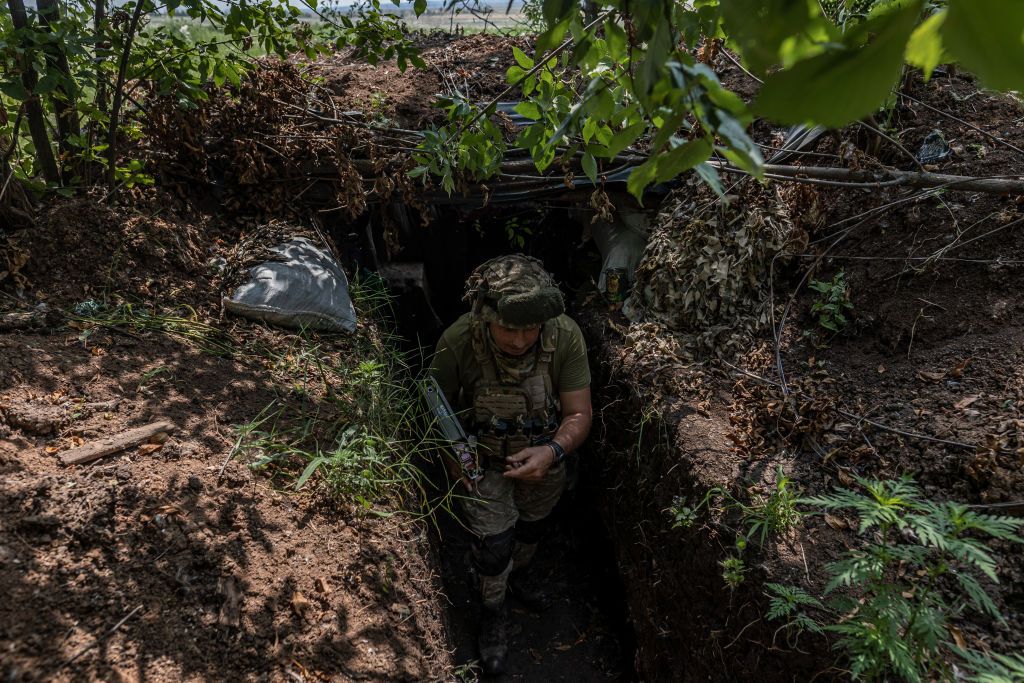Ukraine’s counteroffensive lurches forward: Key moment looms as more forces committed

Fresh videos of Western-made armor rolling across open fields, a new settlement liberated, and a lot of noise on Russian military blogger Telegram channels heralded to the world on July 28 that the Ukrainian summer counteroffensive had upped its gear.
Almost eight weeks into the long-awaited operation that began on June 5 with limited gains and a fair share of disappointment, the counteroffensive has entered a new phase, as new brigades have been seen committed to the fight.
Notice of the new push came first on July 26, when the New York Times reported that Ukraine was committing much of its reserves to a large-scale attack on the sector of the front line south of Orikhiv in Zaporizhzhia Oblast, where Russian defensive lines are at their thickest.
The next day, coming quickly in the footsteps of Russian bloggers’ reports of losing the settlement, Ukraine announced the liberation of the village of Staromaiorske, the fifth in a string of liberated villages along the Mokri Yaly River in western Donetsk Oblast, about 75 kilometers east of the battles near Orikhiv.
The past days attacks have come after the end of a protracted period of more attritional fighting without major territorial gains in the south.
While the world media were pondering on whether or not the counteroffensive had already failed in its objectives, Ukraine’s Armed Forces had changed their tactics to a more systematic, attrition-focused approach.
Now, with evidence that the Ukrainian command has committed or is in the process of committing what could be the majority of its reserve units to the battle, the next week’s fighting poses to be crucial for the counteroffensive.
Three-pronged attack
As has been the case since Ukrainian forces first marched forward toward Russian lines in early June, the counteroffensive has been focused on three key axes of the front line.
South of Orikhiv, now tipped to be the location of the main effort, Ukrainian forces have pushed several kilometers southeast of the village of Robotyne, which lies on the shortest route to the strategic city of Tokmak.
In several videos circulated on social media, Ukrainian vehicles are seen to reach the first set of Russia’s fabled “dragon’s teeth” anti-tank obstacles, just one part of the combined landscape of Russian fortified defenses, also known as the “Surovikin Line” after the former commander of Russia’s war against Ukraine, in the area.
While Ukrainian forces seem to have reached this first line, there has been no visual confirmation so far of whether they have been able to hold the new ground that they have covered.
As is often the case, individual videos can paint a misleading picture of the reality on the front line. In one such case, Russian sources posted footage of destroyed Ukrainian BMP infantry fighting vehicles, also geolocated nearby, to show Ukraine’s apparent failure to advance further.
“You hear the anecdotes from Russian Telegram channels,” Rob Lee, military expert and Senior Fellow at the Foreign Policy Research Institute, told the Kyiv Independent. “Sometimes it's very positive, sometimes it's very negative, it's impossible to tell if this anecdote is representative of the whole or not.”

On the Velyka Novosilka axis further east, the liberation of Staromaiorske by Ukraine’s 35th Marine Brigade was met with a worried reaction from Russian pro-war military bloggers.
Russian forces defending the village were “significantly exhausted by the work of enemy artillery, which continued through the settlement over the past few days,” wrote Semen Pegov, better known as WarGonzo, who noted that the defense of the neighboring village of Urozhaine was now outflanked.
Still, the settlement remains over 10 kilometers from the main Russian defensive line in the sector, which guards the long, open roads to the occupied cities of Mariupol and Berdiansk on the Azov Sea.
Meanwhile, in the east, the ongoing Battle of Bakhmut continues to flow in Ukraine’s favor, as Russian trenches on the flanks of the ruined city are recaptured one by one by hardened Ukrainian brigades, most of which have been fighting in the area at least since winter.
South of Bakhmut, Ukrainian forces led by the 3rd Assault Brigade, renowned as one of the country’s most professional and effective, are closing in on the capture of the key settlement of Klishchiivka, which Russia occupied in January as it approached its near-encirclement of Bakhmut.
Progress, albeit slower, is also being made north of the city, with Ukrainian forces inching towards the villages of Berkhivka and Yahidne, whilst also slicing away at a substantial Russian salient around Dubovo-Vasylivka.
The attacks around Bakhmut are nonetheless best described as a fixing action, to divert Russian resources away from where the fight carries a lot more strategic weight: in the south.
Switch to attrition
After the initial gains and restless attention that characterized the first few days of the counteroffensive, Ukraine’s progress, especially on the southern front line, had slowed almost to a halt over late June and July.
Here, both for Ukrainian and Western officials who were frank about the counteroffensive going slower than expected, and for observers across the world, expectations came up against a sobering reality as the scale and difficulty of the task became clear.
Evaluating the reasons for the initial disappointment is difficult, with blurred lines between a lack of resources, as Commander-in-Chief Valerii Zaluzhnyi has stressed, potential strategic mistakes by the Ukrainian command, and the unforeseeable challenges of this new fight.
Predictably, the main obstacle for a rapid armored advance has first and foremost been the vast, dense minefields placed by Russia in front of their main defenses along the southern front line.
To make progress, Ukraine is using a combination of mine-clearing line chargers and breaching vehicles, although these are both in short supply, and often an easy target for Russian artillery and anti-tank fire, as seen by the loss of donated Leopard 2R breaching vehicles in early June.
This dangerous job is often done by hand by Ukrainian combat engineers, while Russia is able to replenish its minefields with the use of remote deployment systems.
Here, U.S.-made Bradley infantry fighting vehicles have greatly improved the survivability of Ukrainian infantry in the fight, but that alone is not enough to actually break through.
Russian dominance in the air above the battlefield has also played a role, with the U.K. defense ministry noting a significant uptick in the use of Ka-52 attack helicopters to strike exposed groupings of Ukrainian armor and personnel in the southern fields.
“In my view it's not because Ukraine is making a lot of mistakes, it's mainly because Russia is defending in a competent way and they've got very strong defenses,” said Lee.
“Even if you had a perfect unit executing this plan, they were going to take attrition, it was going to be difficult, there is no easy way to do this.”
Still, one telling factor has been that most of the successful gains made so far, around Velyka Novosilka and Bakhmut, have been achieved by Ukraine’s more experienced brigades, which have held their respective sectors for many months without rest.
Meanwhile, some of the newer brigades committed from the reserves, such as the 47th Mechanized, have been documented to have faced serious challenges and internal scandals in their first outing on the battlefield.

After the initial flurry of action on the southern front line, a marked shift in Ukraine’s tactics could be observed.
Ukraine continued to assault Russian lines, but did so mostly with dismounted infantry, systematically advancing under the cover of artillery fire.
Meanwhile, videos released by Ukrainian units showed an uptick in counter-battery attacks targeting Russian artillery, in particular with GMLRS rounds from the HIMARS and M270 systems, as well as with cheap but precise FPV (first-person view) kamikaze drones, which are playing an increasing role in the war on both sides.
This picture is backed by the data on Russian losses published by the Ukrainian General Staff, in which Russia is regularly reported to have lost several dozen artillery pieces in a day, compared to earlier in the year when the daily figures were mostly in the single digits.
These trends, combined with Washington’s supply of a large tranche of DPICMS cluster shells, means that in the artillery war, Ukraine looks to be enjoying an unfamiliar advantage.
“During the attritional phases, Russia was clearly taking losses and Ukraine was clearly having success destroying Russian artillery and other pieces of equipment,” said Lee, “but the question is whether that was enough to set the conditions for a breakthrough now.”
Commitment
While Russian President Vladimir Putin and some Western commentators claimed very early on that the Ukrainian counteroffensive had failed, the objective truth was that it was impossible to tell until Ukraine committed the bulk of its reserves, which consist of around a dozen brigades, many of which NATO-trained and equipped, complemented by the nine light assault brigades of the “Offensive Guard,” formed under the interior ministry.
Looking at the brigades now entering the fight, the renewed attacks this week are a sign that Ukraine is taking the plunge and committing more units, particularly from its 10th Army Corps, though it remains hard to tell if this represents the bulk of Kyiv’s reserves.
“The initial plan was that they wanted 9th Corps (the grouping of brigades sent earlier into the fight) to either get to the main defensive line or breach it themselves, and then get 10th Corps to come in and exploit the breach,” said Lee. “10th Corps seems now to have been committed before that.”

According to Lee, the choice to push forward now could have both positive and negative explanations.
“If it's a positive signal, maybe they've seen a weakness develop because of attrition on the Russian side and now they think they can exploit it,” he said.
“On the other side it might be for negative reasons, if they see that 9th Corps is taking too many losses, they are running through too much artillery ammunition, and there is a concern that they want to have enough ammunition available for the second echelon push. It could be either one of those, but it might be a combination of the two.”
The results of the next days and weeks of fighting depend much on the attrition rates suffered by both sides, on which there is very little verifiable information. Even then, Lee said, this new commitment of Ukrainian units does not represent an all-or-nothing gambit.
“It's not fully clear now how many reserves Ukraine still has remaining,” he added.
“I don't think the counteroffensive is going to end in the near future, I think we will see Ukraine eventually going back to that attritional approach with infantry assaults, going into August or maybe September.”
The long game
At the time of publication, it remains too early to make conclusions on the success of the renewed Ukrainian counteroffensive pushes.
In the medium term, whether or not major gains are made in this new armored advance, Ukraine’s capacity to continue to attack on the ground and expend ammunition at this rate has a limit, reaching which will signal the culmination of the offensive.
It remains unclear what gains Ukraine can make before this time comes, but Kyiv’s goals have likely been adjusted since the counteroffensive began in June, says Lee.
“I think Tokmak is the primary goal right now, Melitopol was likely the more ambitious goal of the Orikhiv axis at first, but it comes down to the Russian side,” he said.
“If Russia has enough reserves to commit, it will be tough for Ukraine to keep advancing, but if Russia has to commit reserves in different places and the other units they have available are weakened or hollowed out, then Ukraine might be able to keep going.”

Beyond the point of culmination, the picture of how the war will trend in the long term is murky.
Before the counteroffensive was launched, much discussion in the West circled around whether this summer was Ukraine’s last chance to conduct such an operation, given Ukraine’s heavy reliance on Western military aid.
"The window of opportunity is open this year. After next winter, it will be extremely difficult to maintain the current level of assistance," said Czech President Petr Pavel, a retired general who is known for his strong pro-Ukrainian stance, in March.
The most likely scenario, according to Lee, is a sustained attritional fight, the results of which likely to be a numbers game between Russian industrial power and the ability of the West to match it with sustained deliveries of ammunition and other equipment.
“Again, it comes down to Russia,” he said. “If Russia continues to mobilize, continues to produce artillery ammunition, this might be one of the best chances Ukraine gets.”
Note from the author:
Hi, this is Francis Farrell, cheers for reading this article. I grew up on the other side of the world, but in Ukraine I have found a home unlike any other. Just like with so many of our readers, I understand that you don't have to be from near here to realize how important Ukraine's struggle is for freedom and human rights all over the world. The Kyiv Independent's mission is to lead the way in continuing to bring the best homegrown, English-language coverage of this war, even if the rest of the world's attention starts to fade. Please consider supporting our reporting.















